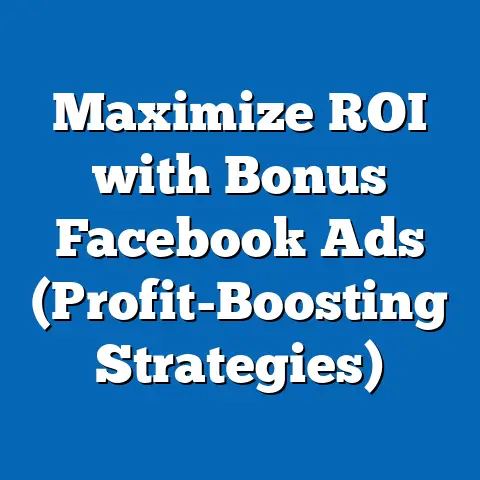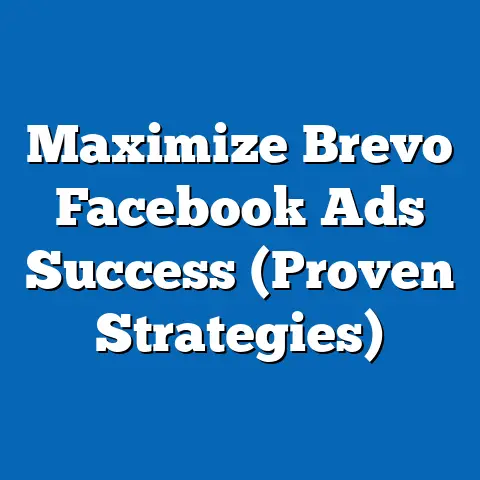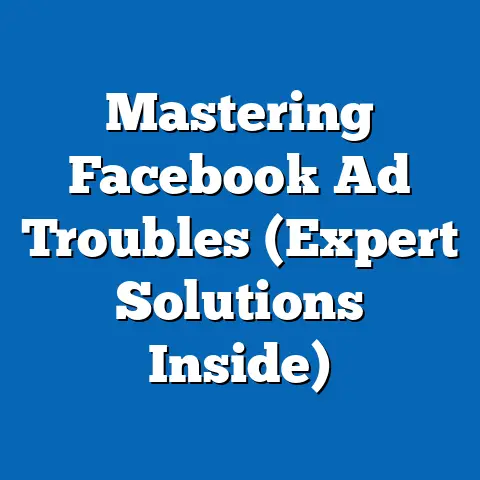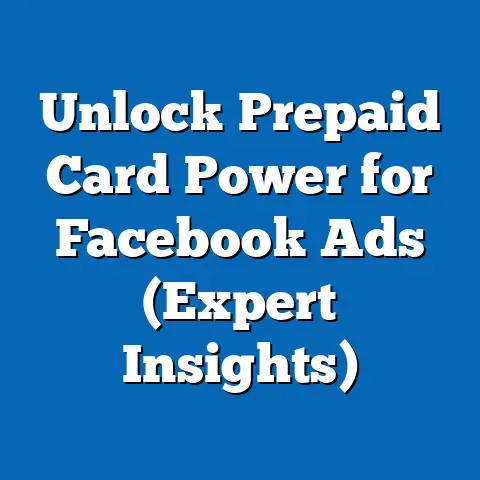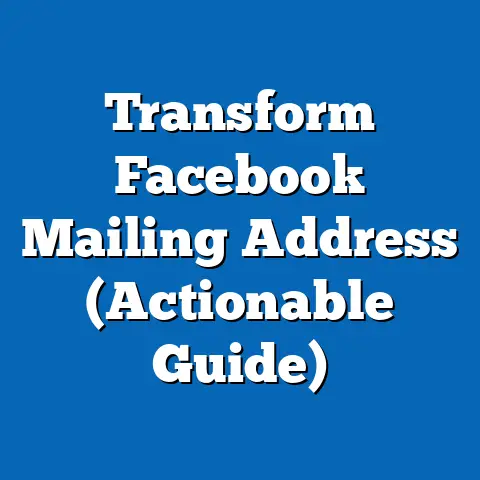Unlock Hootsuite’s Facebook Ads Secrets (Proven Strategies)
Facebook advertising. It’s a landscape that’s constantly shifting, evolving, and, let’s be honest, sometimes feels like trying to nail jelly to a wall. But amidst the chaos, there’s incredible potential. I’ve seen businesses absolutely transform their growth trajectory through smart, targeted Facebook ad campaigns.
Think about it: billions of people are active on Facebook daily. That’s a massive audience waiting to be connected with your brand. The key? Knowing how to cut through the noise and deliver the right message to the right people at the right time.
That’s where Hootsuite comes in.
I remember when I first started using Hootsuite years ago. I was juggling multiple social media platforms, feeling overwhelmed, and definitely not getting the results I wanted from my Facebook ads. Hootsuite became my lifeline, a centralized hub to manage everything from scheduling posts to analyzing ad performance. It wasn’t just a tool; it was a game-changer.
Hootsuite isn’t just a social media management platform; it’s a powerful engine for optimizing your Facebook ad campaigns. It provides the tools and insights you need to streamline your workflow, refine your targeting, and ultimately, boost your ROI.
Think of this as your comprehensive playbook for Facebook ad success with Hootsuite. By the end of this article, you’ll have the knowledge and confidence to create campaigns that drive results. Let’s dive in!
Section 1: Understanding the Facebook Ads Landscape
The world of Facebook advertising has drastically transformed since its inception. Remember those early days of simple text ads? Now, we’re talking sophisticated targeting, dynamic ad formats, and an algorithm that’s constantly learning and adapting. To truly master Facebook ads, you need a solid understanding of this dynamic landscape.
The Evolution of Facebook Advertising
Facebook advertising has come a long way. Initially, it was a relatively simple platform focused on basic demographics. Now, it’s a powerhouse of data-driven targeting, advanced analytics, and diverse ad formats.
I recall a time when simply having a Facebook page was enough to get noticed. But as the platform grew, so did the competition. Organic reach plummeted, and businesses had to embrace paid advertising to stay relevant. This shift forced marketers to become more strategic, data-driven, and creative.
The introduction of features like custom audiences, lookalike audiences, and retargeting revolutionized how businesses could connect with potential customers. It allowed for hyper-personalized campaigns that delivered the right message to the right person at the right time.
Ad Formats: Choosing the Right Weapon
Facebook offers a plethora of ad formats, each with its own strengths and weaknesses. Understanding these nuances is crucial for creating effective campaigns. Here’s a rundown:
- Image Ads: Simple, yet effective. Perfect for showcasing a product or service with a compelling visual.
- Video Ads: Highly engaging and ideal for storytelling. Video ads can capture attention and convey complex messages in a short amount of time.
- Carousel Ads: Allow you to showcase multiple products or features in a single ad. Great for e-commerce businesses.
- Collection Ads: Designed for mobile shopping, these ads allow users to browse and purchase products directly from the ad.
- Instant Experience Ads: Full-screen, interactive ads that load instantly. Perfect for creating immersive brand experiences.
- Lead Ads: Designed to collect leads directly from Facebook, without sending users to a landing page.
When I first started experimenting with video ads, I was amazed at the level of engagement they generated. A short, compelling video can capture attention and leave a lasting impression. However, it’s crucial to ensure your video is high-quality, mobile-friendly, and optimized for sound-off viewing (since many users watch videos without sound).
The key is to choose the ad format that best aligns with your campaign goals and target audience. Consider what you want to achieve and how you can best convey your message.
Targeting and Audience Segmentation: The Art of Precision
One of the biggest advantages of Facebook advertising is its sophisticated targeting capabilities. You can target users based on demographics, interests, behaviors, and even their online activity.
- Demographic Targeting: Target users based on age, gender, location, education, and more.
- Interest Targeting: Target users based on their interests, hobbies, and passions.
- Behavioral Targeting: Target users based on their online behavior, such as purchase history, device usage, and travel habits.
- Custom Audiences: Target users who have interacted with your business in the past, such as website visitors, email subscribers, or app users.
- Lookalike Audiences: Expand your reach by targeting users who are similar to your existing customers.
I remember working with a client who was struggling to reach their ideal customer. By diving deep into Facebook’s targeting options and creating custom audiences based on their website visitors, we were able to significantly improve their ad performance.
Understanding Facebook’s algorithm is also crucial. The algorithm determines which ads are shown to which users, based on factors like relevance, engagement, and bid amount. By creating high-quality ads that resonate with your target audience, you can increase your chances of getting your ads seen.
Statistics and Trends: The Proof is in the Pudding
Facebook advertising is a powerful tool, and the statistics back it up.
- Facebook’s ad revenue continues to grow year after year, demonstrating its effectiveness for businesses of all sizes.
- Mobile advertising accounts for a significant portion of Facebook’s ad revenue, highlighting the importance of mobile-optimized ads.
- Video ads are highly effective, with users spending more time watching video content on Facebook than on other platforms.
- Personalized ads are more likely to resonate with users, leading to higher engagement and conversion rates.
According to Statista, Facebook’s advertising revenue worldwide amounted to 131.9 billion U.S. dollars in 2023. This massive figure underscores the platform’s continued dominance in the digital advertising landscape.
By staying informed about the latest trends and statistics, you can make data-driven decisions and optimize your campaigns for maximum impact.
Key Takeaway: The Facebook ads landscape is constantly evolving, so staying informed and adaptable is crucial. Understanding the different ad formats, mastering targeting techniques, and staying up-to-date with the latest trends will set you up for success.
Next Step: Take some time to explore the different ad formats available on Facebook and identify which ones best align with your campaign goals. Experiment with different targeting options to see what resonates with your audience.
Section 2: Setting Up for Success with Hootsuite
Now that we’ve covered the fundamentals of Facebook advertising, let’s dive into how Hootsuite can help you streamline your workflow and optimize your campaigns. Hootsuite offers a range of features designed to make managing your Facebook ads easier and more efficient.
Integrating Hootsuite with Your Facebook Ad Accounts
The first step is to connect your Facebook ad accounts to Hootsuite. This is a straightforward process that allows you to manage your campaigns directly from the Hootsuite dashboard.
- Log in to your Hootsuite account.
- Navigate to the “Ads” section.
- Click on “Connect Account” and select Facebook.
- Follow the prompts to authorize Hootsuite to access your Facebook ad accounts.
Once your accounts are connected, you can start managing your campaigns, creating new ads, and analyzing performance data directly from Hootsuite.
I remember how much time I used to waste switching between Facebook Ads Manager and other social media platforms. Integrating my Facebook ad accounts with Hootsuite saved me countless hours and allowed me to focus on what really mattered: creating effective campaigns.
The Benefits of Hootsuite’s Dashboard
Hootsuite’s dashboard provides a centralized hub for managing all your social media activities, including Facebook ads. This offers several key benefits:
- Streamlined Workflow: Manage all your social media accounts from a single platform, eliminating the need to switch between multiple tools.
- Improved Collaboration: Collaborate with your team on ad campaigns, assign tasks, and track progress in real-time.
- Enhanced Efficiency: Automate tasks like scheduling ads, monitoring performance, and generating reports.
- Data-Driven Insights: Access comprehensive analytics and reporting features to track ad performance and make informed decisions.
With Hootsuite, I could quickly see how my Facebook ads were performing alongside my other social media efforts. This holistic view allowed me to identify trends, optimize my strategy, and allocate resources more effectively.
Scheduling, Monitoring, and Adjusting Ads in Real-Time
Hootsuite allows you to schedule your Facebook ads in advance, ensuring that your message reaches your audience at the optimal time. You can also monitor your ads in real-time, track key performance metrics, and make adjustments as needed.
- Scheduling: Plan your ad campaigns in advance and schedule your ads to run at specific times.
- Monitoring: Track key performance metrics like impressions, clicks, and conversions in real-time.
- Adjusting: Make changes to your ads based on performance data, such as adjusting your targeting, ad copy, or budget.
I found the scheduling feature particularly useful. I could plan my entire Facebook ad campaign for the week and schedule all my ads in advance, freeing up time to focus on other tasks.
Hootsuite’s Analytics Tools: Unveiling Ad Performance
Hootsuite’s analytics tools provide valuable insights into your Facebook ad performance. You can track key metrics, identify trends, and make data-driven decisions to optimize your campaigns.
- Track Key Metrics: Monitor metrics like impressions, clicks, conversions, cost per click (CPC), and return on ad spend (ROAS).
- Identify Trends: Analyze your data to identify patterns and trends in your ad performance.
- Make Data-Driven Decisions: Use your insights to optimize your campaigns, such as adjusting your targeting, ad copy, or budget.
I used Hootsuite’s analytics to identify which of my ads were performing the best and which ones needed improvement. By focusing on the ads that were driving the most results, I was able to significantly improve my overall campaign performance.
Key Takeaway: Hootsuite provides a centralized platform for managing your Facebook ad campaigns, streamlining your workflow, and optimizing your performance. Integrating your Facebook ad accounts with Hootsuite is a crucial step towards achieving success.
Next Step: Connect your Facebook ad accounts to Hootsuite and explore the features available on the dashboard. Familiarize yourself with the scheduling, monitoring, and analytics tools.
Section 3: Crafting Compelling Ad Copy and Visuals
Your ad copy and visuals are the first things people see, so they need to be attention-grabbing and persuasive. This section will guide you through the art of crafting compelling ad copy and visuals that resonate with your target audience.
The Art of Persuasive Ad Copy
Writing effective ad copy is a skill that requires creativity, empathy, and a deep understanding of your target audience. Here are some tips:
- Know Your Audience: Understand their needs, wants, and pain points.
- Write Clear and Concise Copy: Get straight to the point and avoid jargon.
- Highlight the Benefits: Focus on what your product or service can do for the customer.
- Use Strong Calls-to-Action: Tell people what you want them to do (e.g., “Shop Now,” “Learn More,” “Sign Up”).
- Create a Sense of Urgency: Encourage people to take action now (e.g., “Limited Time Offer,” “Sale Ends Soon”).
I’ve learned that the best ad copy is often the simplest. Focus on clarity, conciseness, and the benefits your product or service offers. Avoid hype and exaggeration, and instead, focus on building trust and credibility.
A/B Testing Headlines and CTAs
A/B testing is a crucial part of optimizing your ad copy. By testing different headlines and calls-to-action, you can identify what resonates best with your audience.
- Create Multiple Versions of Your Ad: Test different headlines, ad copy, and CTAs.
- Run Your Ads Simultaneously: Ensure that each version of your ad is shown to a similar audience.
- Track Your Results: Monitor key metrics like click-through rate (CTR) and conversion rate.
- Identify the Winner: Determine which version of your ad performs the best.
- Implement the Winning Version: Use the winning version of your ad in your campaign.
I once ran an A/B test on a Facebook ad campaign for a local restaurant. We tested two different headlines: “Delicious Food, Great Prices” and “The Best Restaurant in Town.” The second headline, “The Best Restaurant in Town,” significantly outperformed the first, driving more clicks and conversions.
Choosing Visually Appealing Images or Videos
Your visuals are just as important as your ad copy. Choose images or videos that are visually appealing, relevant to your message, and optimized for Facebook’s ad specifications.
- Use High-Quality Images: Avoid blurry or pixelated images.
- Choose Relevant Images: Ensure that your images are relevant to your product or service.
- Optimize for Facebook’s Specifications: Follow Facebook’s guidelines for image size and resolution.
- Consider Using Video: Video ads are highly engaging and can capture attention more effectively than static images.
I’ve found that using images of people using your product or service can be particularly effective. People are more likely to connect with images that show real people enjoying your product or service.
Hootsuite’s Creative Tools: Enhancing Your Visuals
Hootsuite offers a range of creative tools that can help you create high-quality visuals for your ads. These tools include:
- Image Editor: Edit your images directly within Hootsuite, adjusting brightness, contrast, and other settings.
- Video Editor: Create and edit videos for your ads, adding text, music, and other effects.
- Template Library: Access a library of pre-designed templates that you can customize for your ads.
I often use Hootsuite’s image editor to quickly adjust the brightness and contrast of my images before uploading them to Facebook. This helps ensure that my images look their best and capture attention.
Key Takeaway: Compelling ad copy and visuals are essential for capturing attention and driving clicks. Focus on writing clear and concise copy, testing different headlines and CTAs, and choosing visually appealing images or videos.
Next Step: Review your existing Facebook ads and identify areas where you can improve your ad copy and visuals. Experiment with different headlines, CTAs, and images to see what resonates best with your audience.
Section 4: Targeting the Right Audience
Targeting the right audience is paramount to the success of any Facebook ad campaign. If you’re showing your ads to the wrong people, you’re wasting your money. This section will guide you through advanced targeting techniques available through Facebook Ads Manager and how to leverage Hootsuite to create custom and lookalike audiences.
Advanced Targeting Techniques
Facebook Ads Manager offers a wide range of targeting options that allow you to reach specific audiences based on demographics, interests, behaviors, and more.
- Detailed Targeting: Combine multiple targeting options to reach a highly specific audience. For example, you could target women aged 25-34 who are interested in yoga and live in New York City.
- Layered Targeting: Use “and” and “or” operators to refine your targeting. For example, you could target people who are interested in both fitness and healthy eating.
- Exclusion Targeting: Exclude specific audiences from seeing your ads. For example, you could exclude your existing customers from seeing your lead generation ads.
I’ve found that layered targeting can be particularly effective. By combining multiple targeting options, you can reach a highly qualified audience that is more likely to convert.
Creating Custom Audiences with Hootsuite
Custom audiences allow you to target users who have interacted with your business in the past, such as website visitors, email subscribers, or app users. Hootsuite makes it easy to create custom audiences from your existing customer data.
- Upload Your Customer List: Upload a list of your customer email addresses or phone numbers to Hootsuite.
- Create a Website Custom Audience: Track website visitors and target them with relevant ads.
- Create an App Activity Custom Audience: Target users who have interacted with your mobile app.
I remember working with a client who had a large email list of existing customers. By uploading this list to Hootsuite and creating a custom audience, we were able to target these customers with special offers and promotions, resulting in a significant increase in sales.
Creating Lookalike Audiences with Hootsuite
Lookalike audiences allow you to expand your reach by targeting users who are similar to your existing customers. Facebook analyzes your custom audiences and identifies users who share similar characteristics, interests, and behaviors.
- Choose Your Source Audience: Select a custom audience as the source for your lookalike audience.
- Select Your Audience Size: Choose the size of your lookalike audience, ranging from 1% to 10% of the total population.
- Create Your Lookalike Audience: Facebook will create a lookalike audience based on your source audience and audience size.
I’ve found that lookalike audiences can be a highly effective way to reach new customers who are likely to be interested in your products or services. By targeting users who are similar to your existing customers, you can significantly improve your ad performance.
Case Studies: Successful Targeting Strategies with Hootsuite
Numerous brands have implemented successful targeting strategies using Hootsuite. Here are a few examples:
- A local bakery: Used a custom audience of email subscribers to promote a new line of gluten-free products.
- An e-commerce store: Used a lookalike audience based on their existing customers to reach new shoppers who are likely to be interested in their products.
- A software company: Used website custom audiences to retarget visitors who abandoned their shopping carts.
These case studies demonstrate the power of targeted advertising. By leveraging Hootsuite’s targeting features, you can reach the right audience with the right message and drive significant results.
Key Takeaway: Targeting the right audience is essential for Facebook ad success. Leverage advanced targeting techniques, create custom audiences, and use lookalike audiences to expand your reach and improve your ad performance.
Next Step: Analyze your existing customer data and identify opportunities to create custom audiences. Experiment with different lookalike audience sizes to see what performs best for your business.
Section 5: Budgeting and Bidding Strategies
Setting the right budget and choosing the optimal bidding strategy are crucial for maximizing your return on investment (ROI) on Facebook ads. This section will guide you through the different budgeting options, bidding strategies, and how to optimize your ad spend for maximum impact.
Budgeting Options: Daily vs. Lifetime
Facebook offers two main budgeting options: daily budget and lifetime budget.
- Daily Budget: Sets an average amount that you’re willing to spend each day on your ads. Facebook will try to spend close to your daily budget each day, but it may spend slightly more or less on any given day.
- Lifetime Budget: Sets a total amount that you’re willing to spend over the entire duration of your ad campaign. Facebook will try to spend your budget evenly over the course of your campaign.
I typically recommend using a daily budget for ongoing campaigns and a lifetime budget for campaigns with a specific end date. A daily budget allows you to continuously monitor and adjust your spend, while a lifetime budget ensures that you don’t overspend.
Bidding Strategies: Optimizing for ROI
Facebook offers several bidding strategies that allow you to control how much you’re willing to pay for each ad interaction.
- Lowest Cost: Facebook will try to get you the most results for your budget, without any specific cost targets.
- Cost Per Result Goal: You tell Facebook how much you’re willing to pay for each result (e.g., cost per click, cost per conversion), and Facebook will try to achieve that goal.
- Manual Bidding: You set your own bids for each ad interaction.
I’ve found that the “Cost Per Result Goal” bidding strategy can be highly effective for optimizing ROI. By telling Facebook how much you’re willing to pay for each conversion, you can ensure that you’re only paying for results that are valuable to your business.
Hootsuite’s Budget Management Features
Hootsuite offers several budget management features that can help you track your ad expenses and performance.
- Budget Tracking: Monitor your ad spend in real-time and track your progress towards your budget goals.
- Performance Reporting: Access detailed reports on your ad performance, including key metrics like cost per click, cost per conversion, and return on ad spend.
- Budget Alerts: Set up alerts to notify you when your ad spend reaches a certain threshold.
I use Hootsuite’s budget management features to track my ad spend on a daily basis. This allows me to quickly identify any campaigns that are overspending or underperforming and make adjustments as needed.
Real-World Examples: Achieving Significant ROI
Numerous businesses have achieved significant ROI through strategic budgeting and bidding strategies. Here are a few examples:
- An e-commerce store: Used the “Cost Per Result Goal” bidding strategy to reduce their cost per conversion by 30%.
- A lead generation company: Used a lifetime budget to ensure that they didn’t overspend on a limited-time campaign.
- A local restaurant: Used a daily budget to continuously monitor and adjust their ad spend based on performance.
These examples demonstrate the importance of strategic budgeting and bidding. By carefully considering your budget options and bidding strategies, you can maximize your ROI and achieve your advertising goals.
Key Takeaway: Strategic budgeting and bidding are crucial for maximizing your ROI on Facebook ads. Choose the right budgeting option, select the optimal bidding strategy, and leverage Hootsuite’s budget management features to track your ad expenses and performance.
Next Step: Review your existing Facebook ad campaigns and evaluate your budgeting and bidding strategies. Experiment with different bidding strategies to see what performs best for your business.
Section 6: Analyzing and Optimizing Ad Performance
Analyzing your ad performance and continuously optimizing your campaigns is the key to long-term success with Facebook advertising. This section will guide you through the key performance metrics to track, how to use Hootsuite’s analytics to assess performance, and actionable tips for adjusting your ad campaigns based on data insights.
Key Performance Metrics
There are several key performance metrics that you should track to assess the success of your Facebook ads.
- Impressions: The number of times your ad was shown to users.
- Reach: The number of unique users who saw your ad.
- Click-Through Rate (CTR): The percentage of users who clicked on your ad after seeing it.
- Conversion Rate: The percentage of users who completed a desired action (e.g., made a purchase, filled out a form) after clicking on your ad.
- Cost Per Click (CPC): The amount you paid for each click on your ad.
- Cost Per Conversion (CPA): The amount you paid for each conversion.
- Return on Ad Spend (ROAS): The amount of revenue you generated for every dollar you spent on ads.
I always prioritize tracking ROAS. It gives me a clear picture of how much revenue I’m generating for every dollar I spend on ads, allowing me to make informed decisions about my budget and bidding strategies.
Using Hootsuite’s Analytics
Hootsuite’s analytics tools provide a comprehensive view of your Facebook ad performance. You can track key metrics, identify trends, and make data-driven decisions to optimize your campaigns.
- Customizable Dashboards: Create custom dashboards to track the metrics that are most important to your business.
- Real-Time Reporting: Access real-time reports on your ad performance, allowing you to quickly identify any issues or opportunities.
- Trend Analysis: Analyze your data over time to identify trends and patterns in your ad performance.
- Competitor Analysis: Compare your ad performance to that of your competitors.
I use Hootsuite’s customizable dashboards to track the metrics that are most important to my business, such as ROAS, CPA, and conversion rate. This allows me to quickly identify any campaigns that are underperforming and make adjustments as needed.
Continuous Optimization
Continuous optimization is crucial for maximizing the performance of your Facebook ad campaigns. This involves regularly analyzing your data, identifying areas for improvement, and making adjustments to your campaigns.
- Test Different Ad Copy and Visuals: A/B test different headlines, ad copy, and images to see what resonates best with your audience.
- Refine Your Targeting: Continuously refine your targeting to ensure that you’re reaching the right audience.
- Adjust Your Bidding Strategy: Experiment with different bidding strategies to see what performs best for your business.
- Monitor Your Results: Regularly monitor your results and make adjustments as needed.
I make it a habit to review my Facebook ad performance on a weekly basis. This allows me to identify any areas for improvement and make adjustments to my campaigns before they have a significant impact on my ROI.
Actionable Tips
Here are some actionable tips for adjusting your ad campaigns based on insights gained from data analysis:
- If your CTR is low: Try testing different headlines and ad copy.
- If your conversion rate is low: Make sure your landing page is optimized for conversions.
- If your CPA is high: Try refining your targeting or adjusting your bidding strategy.
- If your ROAS is low: Consider pausing your campaign and re-evaluating your strategy.
By continuously analyzing your data and making adjustments to your campaigns, you can significantly improve your Facebook ad performance and achieve your advertising goals.
Key Takeaway: Analyzing your ad performance and continuously optimizing your campaigns is the key to long-term success with Facebook advertising. Track key performance metrics, use Hootsuite’s analytics to assess performance, and implement actionable tips for adjusting your ad campaigns based on data insights.
Next Step: Set up a system for regularly analyzing your Facebook ad performance. Create custom dashboards in Hootsuite to track the metrics that are most important to your business.
Conclusion
We’ve covered a lot of ground in this guide, from understanding the Facebook ads landscape to mastering ad copy and visuals, targeting the right audience, optimizing your budget, and analyzing ad performance. The key takeaway? Facebook advertising, when done right, is an incredibly powerful tool. And Hootsuite can be your secret weapon to unlock its full potential.
I’ve shared my personal experiences and insights throughout this article, hoping to provide you with actionable strategies that you can implement in your own Facebook ad campaigns. Remember, there’s no one-size-fits-all approach. What works for one business may not work for another. The key is to experiment, analyze your data, and continuously optimize your campaigns.
Don’t be afraid to try new things. Test different ad formats, targeting options, and bidding strategies. The more you experiment, the more you’ll learn about what works best for your business.
I encourage you to leverage Hootsuite’s tools and insights to streamline your workflow, refine your targeting, and ultimately, boost your ROI. Share your experiences in the comments below or through Hootsuite’s community. Let’s learn from each other and help each other succeed in the ever-evolving world of Facebook advertising.
And finally, I invite you to explore Hootsuite’s offerings and start implementing your newfound knowledge in your own Facebook ad campaigns. The potential is there, waiting to be unlocked. Take the first step today and see the difference Hootsuite can make. Good luck!

